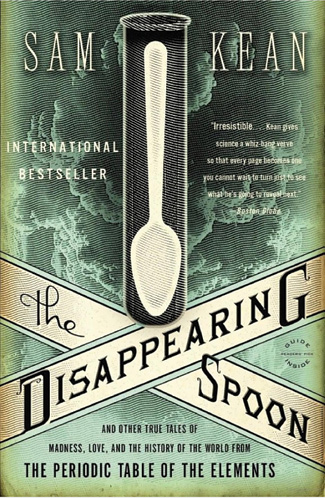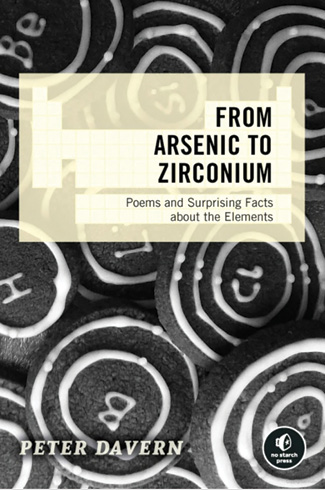resource rendezvous
Teaching the Periodic Table
The Science Teacher—September/October 2021 (Volume 89, Issue 1)
By Holly Amerman
Science teacher friends: happy new school year! While this article is mostly going to be for chemistry teachers, I think there are some good ideas for how to use literature in the classroom in general, so I encourage you all to read on! I always love the beginning of the year in chemistry class; kids are excited, they all think we are going to blow things up, and I get to do a few initial “lab training” activities that are fun for us all! And then, we begin our first unit—the periodic table (can you hear the duhn-duhn-duh in your head as I do?) I’ve tried a lot of things: the good old, everybody gets an element assignment of posters, powerpoints, or videos; the walk around the school elements ID game; trying to race through it; I even had kids make elements posters for the first pep rally once (darn “High School” why is there no “G” on the periodic table (we just used Gallium and made the “a” really tiny)). I did whatever I could do to try and keep up that beginning-of-the-year energy while we talked about thrilling things like element numbers, masses, and table trends (sorry to those of you who love this unit, it just wasn’t my jam). I certainly had some success, and my students usually got through it with me and were happy again when we got to bonding. But, especially for my “non-sciency” kids, it just felt like slamming on the brakes of that new year’s joy—until I stumbled upon The Disappearing Spoon: And Other True Tales of Madness, Love, and the History of the World from the Periodic Table.

The Disappearing Spoon
After re-reading just the first chapter of The Disappearing Spoon, I was immediately reminded of why I enjoyed the book personally and professionally: it makes the most boring topic in chemistry, the periodic table (again, my opinion—but really!), fun and exciting! Not only does it tell the story of arguing scientists, rogue college students, spies, and a boy scout who got a little too interested in radioactivity (the description of his pock-marked face, not from acne but radiation, is a great cautionary tale), the introductory chapters, with their explanation of how to “read a brick,” how the table is set up, and, yes, even the trends, is the best primer of the table of the elements, I’ve ever read. And, unlike your textbook, or even a wiki article, these descriptions won’t put you to sleep!
To say that there are many ways to use this book in your classroom is an understatement. In fact, there is only one way that I would NOT use this book, assign the whole book to the class and ask for a report or something. Okay, I know that is the easiest way to use any book in a science classroom, and I don’t want to hurt anyone’s feelings if you do that (I could certainly see it on a summer book list), but I think this book deserves a better shake. Instead, I would suggest integrating the different parts of the book throughout the year. The first three chapters help set the stage for how the elements were discovered, how the periodic table began, and a offers a tiny view into the trends of the periodic table. These would be great as a class read, or, if you do some sort of “choose your own” project on the elements or the table, these could be assigned to one of the groups that prefer books (we all have that kid we are constantly asking to put the book away—perfect group leader for this one). Chapter four is an excellent primer to atomic models, bonding, etc., and could be used similarly to the first three chapters.
From here, the chapters diverge somewhat and could be integrated into different units throughout the year, either assigning them to be read and discussed at the beginning or end of a unit, or as an extension project for students who want to know a little more about a topic. Chapter 5, “Elements in Times of War,” is a great conversation on how science can be used for evil. Chapter 6 focuses on the atomic bomb project and would be excellent in your nuclear chemistry unit, and chapter 7 talks a lot about the fight over names for elements, and could bring some vigor to your IUPAC unit. Chapters 8 and 18 could be an entire lesson on the Nature of Science—simple errors, imprecision, happy mistakes, and the general non-linear process of scientific research work in the real world, and the implications for the scientists themselves, and society in general. Chapters 9–17 each take on a topic from history, politics, art, economics, psychology, poisons, even bubbles, and would make great projects for any student interested in these areas as a perfect answer to that “why do we have to learn this?” question.
Finally, chapter 19 is why I began using this book in my AP Chemistry classes years ago. I decided that I needed something different from the typical end of the year review, and one of the suggestions in this chapter is that our grandparents had a very different periodic table, and, given the crazy way the elements were put together (read the rest of the book), maybe our grandchildren should too. And so, that became my yearly capstone project—come up with a convincing way to reorganize some part of the periodic table, and in doing so, demonstrate understanding of the topics we covered in chemistry this year. I honestly think some practicing chemists would have been impressed by the 16 and 17-year-olds in my classes. Not only did they come up with some genuinely creative ideas (if they get stuck, there are lots of good suggestions in the book to get started), but I could almost entirely predict their AP score just from the depth of knowledge demonstrated on this three-day project. While this might be beyond the level of an 8th-grade physical science class or an introductory high school chemistry group, it could be easily modified (just give 5-10 elements, for example), and, will help to ensure your students, and you as well will never forget what they learned that year.

From Arsenic to Zirconium
The second book I want to introduce, From Arsenic to Zirconium: Poems and Surprising Facts about the Elements, is not nearly as flashy or as catchy as The Disappearing Spoon, but, once you get into it, it is just as useful for the classroom, and, is an awesome as a resource for our “bookish” students. Being a science geek, I was never really into poetry, but this is poetry written by a science geek, for science geeks, so don’t let the word “poem” put you off. All of the poems (one for each element 1–92) are five lines long, and after each line comes an explanation of the unique or exciting thing about that element. A sampling of a few of my favorites:
That last one, about the mining in the Democratic Republic of the Congo, and the deadly civil war it brought, is a wonderful opening into how something that we see as so straightforward in science, a little box with “Ta-73” in it, can have such effects on society. I find that when you talk about issues like these, a little away from the hot button ones in America, you can have profound and mostly apolitical conversations with students about how discovery in science doesn’t always make everything better, and that there are complex issues with equity in the world that science may or may not ever have answers for.
Other ways I would use this book would be as a reference for your elements projects, as an entry into a deeper understanding of how the elements interact, or even as a challenge to create similar poems either for the elements not covered in the book (93+) or to redo one of the elements students did not find as compelling.
It had been a while since I first read The Disappearing Spoon, back at the tail end of my chemistry teaching days in 2014, so I was happily surprised to have found that in 2018 a young adult (YA) version of the book was introduced to make it more accessible for younger students, or our lower readers (a literacy expert friend tells me it is on about a 6th or 7th-grade reading level). I will say that unlike some other “adult” versions of science books, I did not find anything inappropriate about the adult version; the YA version simply uses plainer language, is a little funnier (in my opinion), and shorter. I would recommend using it with most high schoolers unless you are teaching AP or IB Chemistry, in which the classic adult version would be a more in-depth look at the topic. For Arsenic to Zirconium, all of the poems are easily accessible for most high schoolers. Still, some of the explanatory paragraphs may be hard for students below upper-middle school reading levels. As always, heterogeneous groupings are an excellent way to overcome this challenge.
There are audio versions of The Disappearing Spoon (adult and YA), as well as digital copies of all three books that could be enlarged if you have students in your class who need those accommodations. While these are not free online, check with your media specialist, it is likely your school can secure a copy or perhaps even has access to it through an online resource. (My state library system app has all versions of the book, print, audio, and ebook, so this is also an option.) For your second language learners, the adult version of The Disappearing Spoon is available in quite a few languages, but I think the simpler language and illustrations in the YA version, along with support from your ESOL/EL personnel at your school, would work better. Finally, my literacy expert friend wanted me to mention that there are generally good funds available to purchase class sets, and they LOVE to do this for content-area teachers! Happy new school year and happy reading!
Questions/comments/something you love with your students you would like to see reviewed? Contact me at holly.amerman@gmail.com.
Test Tubes
•DCIs- 5 of 5 (PS1-1,2,3,4,5,7,8; PS2-6; PS3-4, ESS1-2) 🧪🧪🧪🧪🧪
•CCs- 4 of 5 (patterns, cause and effect, structure and function) 🧪🧪🧪🧪
•SEPs- 3 of 5 (asking questions and defining problems, engaging in argument from evidence, constructing explanations and designing solutions, obtaining, evaluating, and communicating information) 🧪🧪🧪
•Ease of Use for Teachers- 5 of 5 🧪🧪🧪🧪🧪
•Interest to Students- 4 of 5 🧪🧪🧪🧪
Chemistry Literacy Teaching Strategies High School

